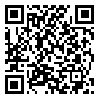BibTeX | RIS | EndNote | Medlars | ProCite | Reference Manager | RefWorks
Send citation to:
URL: http://erj.khu.ac.ir/article-1-25-en.html
Today, national identity is one of the most important issues in developing countries is planned. Much of the training of national identity in the context of formal education takes place .Beginning with the period of fundamental transformation textbooks is also consistent with the new approach. The present article deals with the analysis of national education and from this point of clarification social studies book grade, third grade social studies book compared to the period before the change. Population
is included in the book. The content analysis of qualitative and quantitative research methods and the unit of analysis is the theme. Dimensions of national identity in this research include: symbols, values heritage, celebrities, and characters and events. The results show that both components of national identity have been uneven book, and this is more evident in the social studies book. Social teachings of the book to the celebrities and personalities (37/44%) and social studies books to the value of (50/85%) are paid. Neglect of Fame and national events, elimination of political values, greater attention to the social, moral, religious and social features of the book is the period of fundamental change.
Received: 2016/04/3 | Revised: 2021/11/13 | Accepted: 2016/04/3 | ePublished: 2016/04/3
| Rights and permissions | |
 |
This work is licensed under a Creative Commons Attribution-NonCommercial 4.0 International License. |






